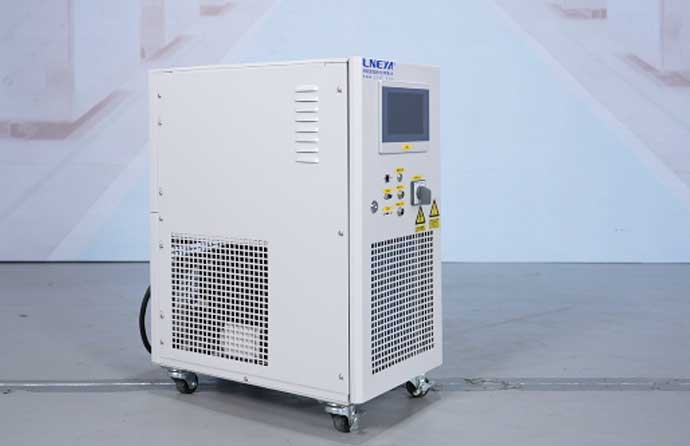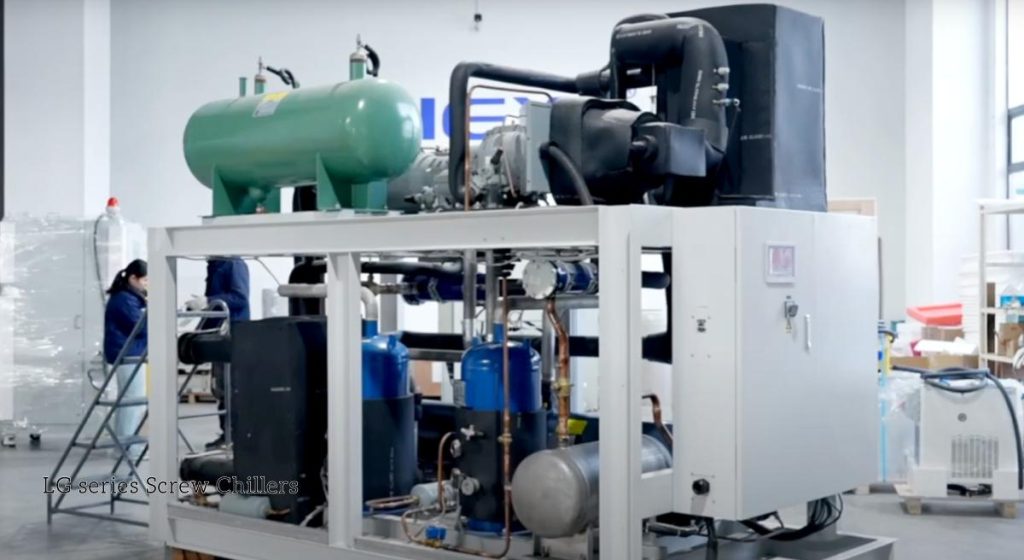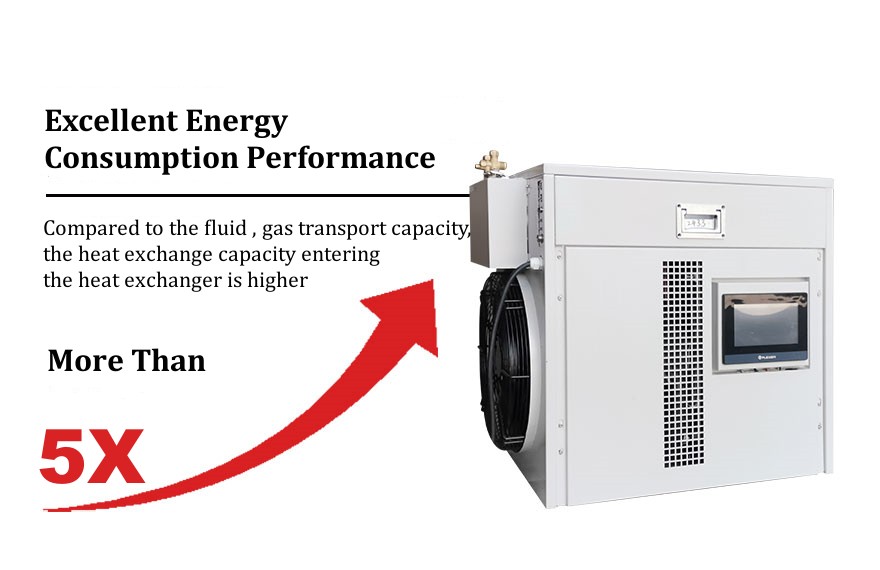Is R22 Refrigerant Still Available for Chillers

- 4 tipi di sistemi di refrigerazione: quale si adatta alla tua struttura?
- Cos’è un chiller VFD: chiller VFD vs chiller non VFD
- What is a Gas Chiller
- What is a Scroll Chiller
- What is a Screw Chiller
- Chiller Refrigerant Charging Tools Steps and Tips
- Chiller Low Pressure Alarm 5 Common Reasons and Solutions
- Is r22 refrigerant still available for chillers
- Agosto 2025
- Luglio 2025
- Giugno 2025
- Maggio 2025
- Marzo 2025
- Febbraio 2025
- Gennaio 2025
- Dicembre 2024
- Novembre 2024
- Ottobre 2024
- Settembre 2024
- Agosto 2024
- Luglio 2024
- Giugno 2024
- Maggio 2024
- Aprile 2024
- Marzo 2024
- Febbraio 2024
- Settembre 2023
- Luglio 2023
- Giugno 2023
- Maggio 2023
- Gennaio 2023
refrigeratore raffreddato ad aria refrigeratore Installazione di un refrigeratore refrigeratori Chiller Troubleshooting Congelatore a freddo refrigeratore di raffreddamento circolatore di raffreddamento e riscaldamento sistema di raffreddamento e riscaldamento cooling system Reattore in vetro a doppio strato sistema di controllo dinamico della temperatura congelatore refrigeratore a gas circolatore di riscaldamento refrigeratore industriale raffreddamento industriale congelatore industriale frigorifero industriale reattore a camicia refrigeratore a bassa temperatura notizie refrigeratore farmaceutico refrigeratore di processo reattore refrigeratore raffreddamento del reattore raffreddamento del reattore riscaldamento riscaldamento del reattore raffreddamento sistema di reattori circolatore refrigerato refrigeratore a refrigerazione refrigeratore a vite refrigeratore per semiconduttori refrigeratore di prova per semiconduttori sundi tcu controllo della temperatura camera di prova termostato refrigeratore a bassissima temperatura refrigeratore di prova per veicoli refrigeratore d'acqua refrigeratore raffreddato ad acqua wtd
If your industry requires temperature control, you’ve undoubtedly heard of R22 refrigerant. Yes, it was once the most common refrigerant in refrigeratori and air conditioning systems. However, with growing environmental awareness and the enactment of relevant environmental regulations, it has been gradually phased out worldwide.
If you still have R22 chillers in your workshop, you might be wondering: Can R22 still be used in chillers? How should it be maintained? What are some environmentally friendly alternatives to R22?
What is R22 refrigerant?
R22 refrigerant (HCFC-22) is a colorless, odorless gas. It has a high latent heat of vaporization and absorbs a large amount of heat during evaporation. Furthermore, it is not easily decomposed at normal operating temperatures and does not react with many common lubricants.
Therefore, since the 1970s, it has been widely used in chillers, central air conditioners, refrigerators, and industrial refrigeration equipment, becoming one of the most common refrigerants at the time.
However, R22 contains chlorine in its molecule, which means that if released into the atmosphere, it can damage the ozone layer. Moreover, its GWP is as high as 1810, significantly impacting the greenhouse effect. Therefore, it is listed as a controlled phase-out substance under the Montreal Protocol, and many countries and regions have banned and discontinued its use.
R22 Refrigerant in Chillers
From the 1990s to the early 2000s, R22 refrigerant was practically standard in refrigeration equipment. It powered a vast number of centrifugal, screw, and scroll chillers. It’s no exaggeration to say that at the time, R22 chillers were used in everything from central air conditioning in commercial office buildings to industrial refrigeration in the chemical and pharmaceutical industries. Of course, a key reason for this was the low price and plentiful supply of R22.
Is R22 refrigerant still available for chillers?
Can R22 refrigerant still be used in chillers today? Requirements vary by country and region. We will primarily examine the current status of R22 use in the United States, the European Union, and China.
United States
Effective January 1, 2020, the EPA completely banned the new production and import of R22. If your R22 chiller needs maintenance, only use recycled or reclaimed R22.
EU
The EU’s regulation of R22 refrigerant began in 2015. It mandates a complete ban on its use, requiring even your equipment to phase out R22 chillers.
Cina
Since 2020, China has banned the production of R22. However, some existing R22 equipment can continue to be used. Users will simply have to rely on recycling to obtain the refrigerant.
This means that newly produced R22 refrigerant is no longer permitted on the market in these countries and regions. Even if you need it, you can only purchase scarce inventory and recycled products.

Explore high-efficiency and energy-saving chiller solutions!
Challenges of R22 Chillers
If you’re still using R22 equipment, you may be facing the following challenges:
Rising Costs
Commodity prices are inevitably influenced by supply and demand. Since R22 refrigerant is no longer produced, purchasing channels have decreased, leaving you with only recyclers or those with inventory. When supply exceeds demand, prices rise. Consequently, you face higher operating costs than before.
Environmental Violations
In some countries and regions, not only is the use of R22 refrigerant banned, but the use of R22 equipment is also restricted. Even if your chiller is functioning perfectly, it’s just sitting there gathering dust.
Low Energy Efficiency
With the introduction of modern refrigerants like R134a, R410A, and R1234ze, chillers using these refrigerants have been found to be more energy efficient than R22 chillers.
Solutions for R22 Chillers
Given these restrictions on R22 chillers, what should you do if you own one?
Continue Using Your Old Chiller
If your region doesn’t have strict restrictions on the use of R22 equipment, you can continue using it for a short period of time by purchasing recycled R22. The reason for this is that you don’t know when these chillers will be phased out by environmental regulations.
Refrigerant Replacement
Although it’s an R22 chiller, its refrigeration cycle is compatible with many new refrigerants. This means you don’t have to spend money on a new unit; you only need to modify the system and change the refrigerant. So, what refrigerants can replace R22?
R410A is a refrigerant blend of R32 and R125 in a specific ratio. Its ODP (ozone depletion potential) is zero, making it harmless to the ozone layer. Its operating pressure is approximately 50% higher than R22, resulting in superior thermodynamic performance and higher cooling efficiency.
However, it requires a dedicated compressor and piping, making it a non-drop-in replacement for R22 systems. Furthermore, it must use POE oil, rather than the traditional mineral oil, as a lubricant.
R32 is a single refrigerant with zero ODP and a global warming potential (GWP) of approximately 675, making it more environmentally friendly than R410A. Although it is mildly flammable (A2L), its use is permitted under strict safety regulations.
R407C is a blend of R32, R125, and R134a. Its thermodynamic properties are similar to R22, allowing it to be used directly in existing R22 chillers with minimal modifications. Its zero ODP, ozone-safety, and continued regulatory approval in most countries make it a popular transitional replacement for R22.
R290 is a natural refrigerant with zero ODP and an extremely low GWP (approximately 3). It is highly energy-efficient and environmentally friendly. Due to its flammability, current regulations impose strict safety standards on its use, but its use is permitted in small, compliant refrigeration equipment.
Of course, refrigerant replacement requires comprehensive consideration of compressor and lubricant performance, as well as system sealing. This requires a professional assessment, not guesswork or trial and error.

Replacing the Entire Unit
In addition to the above methods, a simpler solution is to purchase a new chiller using an environmentally friendly refrigerant. This eliminates the need to worry about the equipment and refrigerant becoming obsolete in the long term. Furthermore, the system’s energy efficiency can be significantly improved.
Conclusione
R22 refrigerant has entered the phase-out phase in most countries and regions. While recycled refrigerant can still be used, it’s clearly not a long-term solution due to its high price and limited supply. For long-term projects, replacing a new environmentally friendly chiller is a wiser option.
LNEYA offers a variety of environmentally friendly refrigerant chillers, including vite e scroll types, and can tailor temperature control solutions to suit different operating conditions and regional environmental regulations.
FAQ
Chiller correlati
CONTATTO
TEL:TELEMATICO
EMAIL: EMAIL: EMAIL: EMAIL: EMAIL: EMAIL: EMAIL
WeChat e WhatsApp: il nostro servizio

Wechat QR

Hai domande o hai bisogno di un preventivo? Compila il modulo sottostante e il nostro team ti risponderà entro 24 ore.
 Refrigeratori industriali LNEYA Produttore Fornitore
Refrigeratori industriali LNEYA Produttore Fornitore
















